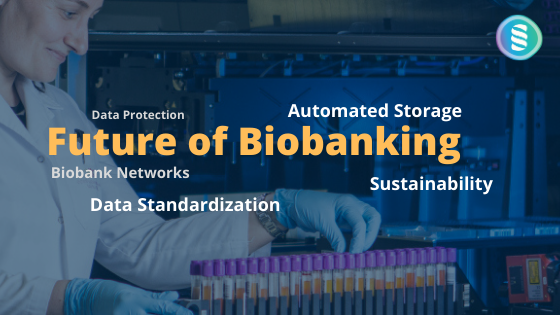Biobanks are acknowledged as a remarkable tool for research and scientific purposes. There are several types of biobanks, and two primary subtypes are – disease-oriented and population-based.
The requirements for the establishment, obtainment, and use of samples in these two different types of biobanks are very diverse. In disease-oriented biobanks, samples are collected from patients for diagnosis/treatment. Whereas in population-based biobanks, samples are collected from healthy participants.
Biobanks involve the collection, storage, and distribution of biological samples for research purposes. This activity includes an effective, efficient, and modern research system. The development of technologies and the need to have research results have made it mandatory to start the biobanks implementation phase.

Advances in Technical Storage
The fundamental elements for creating functional biobanks are – quality, quantity, collection, and harmonizing the samples. Biospecimens require high standards of storage and shared protocols. This is to ensure the maintenance of sample quality and biobanks’ sustainability that supports these samples. Consequently, it is vital to integrate the traditional-technical principles with which biobanks were developed. This could make it possible to ensure large numbers of samples and their variability, ensuring high-quality standards and cost containment.
Harmonization and Standardization
Biobanks aim to find collaborative dialogue platforms, application of shared protocols, and standard rules. It includes obtaining samples, collection and storage, treatment data, and exchanging material and information. It also involves the infrastructures’ administrative and financial management.
Better harmonization can lead to meaningful results, such as:
- Obtaining an orderly and multicenter collection of data and samples.
- Creating uniform groups of patients with extensive and well-described case histories.
- The opportunity of creating studies on large cohorts and sub-cohorts of patients.
Biobank Network
Basic and translational research has very complex molecular biology procedures. In such cases, it is vital to have suitable samples in large quantities. A single biobank may not guarantee the availability of many samples that comply with adequacy standards. Therefore, several infrastructures must harmonize with each other. The networking of biobanks allows:
- Multiple collections and storage sites unite into a single platform for sharing and exchanging resources.
- This can result in exchanging samples and data, favoring collaboration both at a national and international level.
- Networking of biobanks within academic facilities could push non-academic researchers, private research facilities, and pharmaceutical industries to find samples from other sources.
- Improved research quality standards.
Examples of biobank network
- EuroBioBank: The EuroBioBank network is the first operating network of biobanks in Europe, providing human DNA, cell, and tissue samples to the scientific community researching rare diseases. It is the only network dedicated to rare disease research in Europe. It is the biobank network of RD-Connect.
- Swiss Biobanking Platform (SBP): SBP is the research infrastructure of national importance supporting human and non-human biobanks.
- BBMRI-ERIC: BBMRI brings together all the leading players from the biobanking field – researchers, biobankers, industry, and patients – to boost biomedical research.
- Tissue Directory and Coordination Centre (TDCC): TDCC has developed the UK’s only register of sample collections covering multiple diseases.
- Spanish Biobank Network: Adds value to the Spanish biobank group, intending to provide high scientific, technical, and technological support by providing human biological samples and associated data of excellent quality.
Biobanks’ Sustainability
As the global economic situation has deteriorated, funding for most public biobanks has shrunk. The aim should be to make these infrastructures more efficient and sustainable. The basic steps to achieve this are:
- To hire expert consultants in finance and business organizations and educate them on the peculiarities of a biobank.
- Analyze costs and improve the relationship between cost and effectiveness.
- Maximize the availability and usability of samples limiting the sample waste.
- Develop a business model that identifies potential users by aligning the supply of samples to stakeholders’ needs.
The Future of Data Protection
Patients and donors must be thoroughly apprised about the risk of disclosing the donor’s identity. The four measures that have been considered crucial by the International Bioethics Committee (IBC) to protect individuals’ rights and management of big data are governance, education, capacity building, and benefit-sharing. These aspects, also concerning data protection, cannot be forgotten in the management of biobanks.
Conclusions
The future of biobanks is already here. The need for technological headway can aid in the evolution of research. Nevertheless, biobanks’ management must be up to date from both a financial and an ethical and regulatory point of view.
Acknowledgments
https://www.mdpi.com/2673-6284/9/4/23/htm
